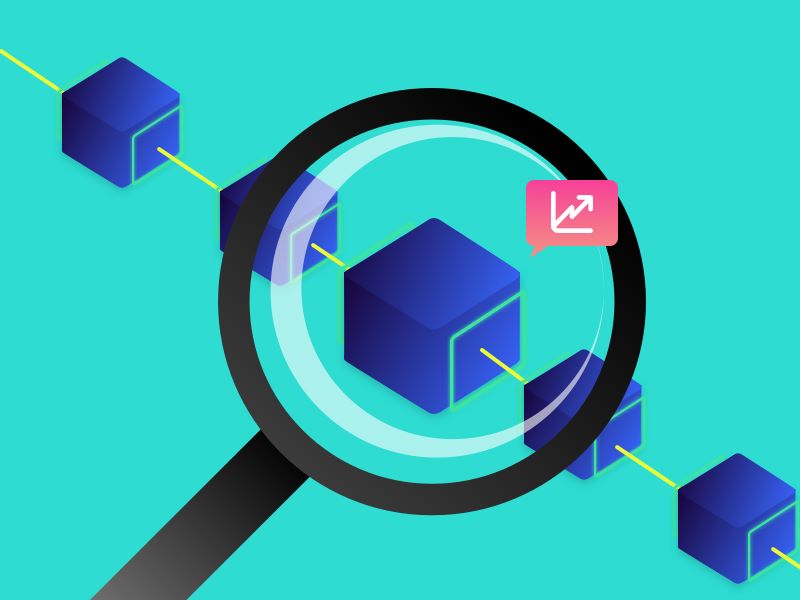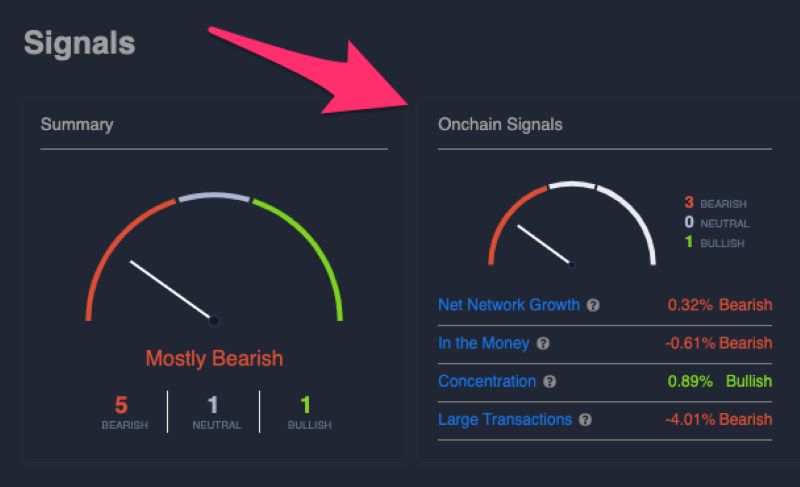Have you ever wondered what is on-chain? It’s the skeleton of blockchain tech — where all the secure deals live. Picture a block, a chain, all locked together. That’s your money moves, coded and shared for all to see. Now, I’m here to unpack this and show you just why it’s crucial. These aren’t hollow words; we’ll dive straight into the heart of blockchain basics, unmasking how on-chain actions ripple out. From the ground up, understanding the blockchain ledger isn’t just nerd talk—it’s the insider knowledge that arms you for the crypto world. Ready to break down on-chain transactions and data analysis? I’ve got your back. Stay with me as we shoot straight to the meat of smart contracts and on-chain governance, leaving out the fluff. By the time we hit those advanced on-chain metrics, you’ll be spitting wisdom like a pro. Let’s roll up our sleeves and dig in.
Understanding the Basics of Blockchain and On-Chain Technology
The Foundation of On-Chain Transactions
Let’s take a simple look at on-chain transactions. These are deals that happen on the blockchain and stay there. They’re safe because they follow set rules everyone knows about. Each deal gets checked by many computers. This way, nothing dodgy can happen without someone noticing.
When you send Bitcoin, this is an on-chain transaction. It moves from one spot to another on the Bitcoin network. Folks trust this system because it’s open and honest. It’s like writing in a book that no one can erase. Everyone can see the writing, so it’s clear what went down.
This blockchain is a chain of blocks, where each block has a bunch of deals. They all link up because they’ve got a special code that connects them. It’s like a puzzle where each piece has to fit just right. And once a piece sticks, it’s there for good.
Blockchain Ledger Details and Their Significance
Now let’s dive into blockchain ledger details. It’s pretty much like a ledger for your cash flow but for digital money. It records every transaction that’s ever happened. This way, it’s hard for anyone to cheat. It’s also public, so we can all see and check it if we need to.
This ledger is key to how Bitcoin and Ethereum work. It helps keep things fair and running smooth. When deals happen, they get grouped into blocks. Every block is like a page of this ledger. Full blocks get locked with a tough math problem. Solving it seals the block and adds to the chain.
The ledger isn’t just for Bitcoin or Ethereum. Lots of different things can use it. Even things like voting or tracking where your apples come from. This shows us that the tech is super useful for many tasks. It’s not just for the crypto crowd.
Smart contracts also live on the blockchain ledger. They are like normal contracts but smart because they can do stuff alone. They follow rules in the code and work automatically. Like, if I do my job, I get paid without needing to ask. It’s all in the code, and the code does what it says.
In the end, blockchain is powerful. It’s like a mix of a bank, a notary, and a vault that everyone can check. It keeps your deals safe and sound. By understanding on-chain stuff, we can get how our digital world works better. It’s a tool that can do a lot, and we’re just getting started with it.
Diving Deep into On-Chain Transactions and Data Analysis
On-Chain vs Off-Chain: Distinguishing The Differences
What makes on-chain different from off-chain? On-chain transactions are recorded on a blockchain. Off-chain transactions are not on a blockchain. They can be quicker and may have lower fees. On-chain needs all network members to check new entries. Off-chain doesn’t. This is key in how cryptocurrencies work.
On-chain actions are out in the open. They let everyone see what’s going on, bringing trust without needing to know each other. The blockchain’s rules keep things in check. On-chain shows the power of blockchain fundamentals – transactions that are secure, transparent, and permanent.
Off-chain takes place outside the blockchain. It can be faster and cheaper, but less public. It’s like people agreeing without telling everyone. These deals often need trust in someone to say it happened correctly.
It’s like writing a deal on paper (on-chain) versus just shaking hands (off-chain). Both are useful. But the choice depends on what you need: security and trust, or speed and lower costs.
Leveraging On-Chain Data for Cryptocurrency Analysis
How can on-chain data guide cryptocurrency investing? Simple – it’s like a map of money movement. It includes wallet tracking, transaction volumes, and smart contract operations. It lets us peek into market motions, painting a picture of demand and supply.
Let’s focus on Bitcoin and Ethereum. Clues lie in their on-chain data. We can spot patterns in activity. High transaction volumes might mean more interest. Investors care about these insights. They help in making smart choices.
On-chain metrics give us a detailed view. We track token movements, seeing where they go. This info is a treasure for decision-makers. It helps in figuring out what’s hot and what’s not.
Imagine running a shop without counting customers or sales. That’s investing without on-chain analysis. The blockchain ledger holds this valuable info. We look at fees, the time it takes for transactions, and more. It all comes down to understanding the data, deciphering the blockchain’s secrets.
In the end, on-chain analysis is like a lantern in the dark, guiding through the twists and turns of crypto markets. It uncovers the hidden, showing us the true colors of blockchain’s potential. It’s exciting. It’s demanding. It’s essential. And it’s what makes the gears of blockchain turn day in, day out.
The Role of Smart Contracts and On-Chain Governance
Smart Contracts on Blockchain: How They Work
Think of smart contracts like vending machines. You pick a snack, pay, and get your choice. Smart contracts on blockchain do the same with digital stuff. They run on code and act when certain conditions meet. For example, they can send money when a job is done. They follow rules without people in between.
Say Alice needs Bob to code a game. They use a smart contract on Ethereum. The contract holds Alice’s payment and checks Bob’s work. When finished, it sends Bob the funds. If he fails, it returns the payment. Smart contracts run on blockchain, so everyone sees the deal is fair.
Smart contracts change the way we trust. They don’t require a middleman. They free up time and cut costs. With them, blockchain creates trust and security. Smart contracts are the gears in the blockchain machine. They keep deals running smooth and fast.
Interpreting On-Chain Governance Models
On-chain governance shapes how blockchain rules change. It’s like a digital democracy. Coin holders vote on updates and changes. Think Bitcoin or Ethereum. When rules need updates, the community decides. It’s not one person’s call, it’s many. This voting keeps the system fair and flexible.
Imagine a city where every citizen votes on new laws. This is on-chain governance. It’s vital for blockchain. It avoids fighting and splits in the community. The rules set for voting ensure everyone plays fair. This governance is open for all to see. That’s why trust in blockchain is high.
On-chain governance keeps the blockchain healthy. It helps it grow and adapt over time. It makes sure changes help everyone, not just a few. You can think of it as the heartbeat of blockchain. It keeps the blood flowing and the body moving, propelling the whole system forward.
Advanced On-Chain Metrics and Asset Management Strategies
On-Chain Activity Indicators and Their Influence on Investment
As a blockchain analyst, I look at on-chain activity a lot. This stuff is like clues. They tell us how healthy a blockchain is. Think of it like checking a car’s engine sounds. Good sounds mean a good engine. It’s similar here with blockchains.
Now, what’s an on-chain activity indicator? Well, it’s a sign that shows us where the money’s moving. We see if people are trading a lot, or a little. For instance, a spike in on-chain transactions might hint that something big is coming. Savvy investors watch these signs closely.
They use this data to make smart choices. Higher transaction volumes often signal that an asset’s getting hot. On the other hand, if wallets are quiet, it could mean folks are stepping away. When we know this, we can plan better.
Imagine you’ve got a lemonade stand. By counting how many folks walk by, you guess how much lemonade to make, right? It’s kinda like that. We watch these patterns and guess where blockchain assets might go. We call this ‘on-chain analysis’. With it, we can better guess if prices will rise or fall.
On-Chain Asset Management and Decentralized Ledger Technology
Now, let’s chat about how we manage assets with on-chain tools. What we have here are things called smart contracts. These are like robot helpers. They live on the blockchain and work for us. You tell them what to do, and they do it, no mistakes.
This tech gives us what we call a ‘trustless system’. Trustless doesn’t mean it’s not trustworthy. It means we don’t need to trust any person for it to work. The code does all the trusting for us. It’s pretty safe because the rules are clear and the system can’t be fooled.
Every single thing that happens is recorded on a ledger. It’s public for all to see. This makes it hard for people to cheat. You can’t just ‘undo’ things in a blockchain. It’s like writing in pen, not pencil. This keeps our assets safe.
Think of it like storing your toys in a clear box. Everyone can see you put it in there and take it out. No secrets, right? This is how we use this cool ‘decentralized ledger technology’.
There’s also no big boss in charge. Instead, everyone checks everyone else’s work. This is like a class where every student grades the tests. They make sure everything’s fair. It’s all about the group, not just one person being in charge.
With all these tools, managing on-chain assets gets really smooth. We keep an eye on how much it costs to make transactions. We know the fees before we make moves. Using ‘on-chain transaction fees’ info, we stay smart about costs.
To sum it up, on-chain activity indicators give us big clues for investment. Smart contracts help us manage our assets without trusting just one person. This mix of tech and rules makes the blockchain world run smoothly. It’s a bit like having great tools and a good playbook for our money game.
As we wrap up, we’ve seen how on-chain technology is vital for secure and clear transactions. We learned about blockchain’s role and why each detail in the ledger matters. We also compared on-chain and off-chain methods, showing how on-chain data improves our crypto choices.
Plus, we covered smart contracts and how they make deals on blockchain safe and automatic. We peered into on-chain governance, seeing how rules are made and followed in this world. Then, we dove into advanced on-chain metrics that smart investors use to guide their choices.
I believe understanding these concepts can make your crypto journey more solid. It’s about safe deals, smart choices, and knowing the tech you’re using. Keep these insights close, and you’ll be set to navigate the on-chain landscape like a pro!
Q&A :
What is the meaning of on-chain in cryptocurrency?
On-chain refers to transactions and events that occur on the blockchain and are permanently recorded on a public ledger. This includes all cryptography-secured, immutable transactions that are verifiable by all participants in the network.
How does on-chain differ from off-chain?
On-chain transactions differ from off-chain transactions by being directly recorded and verifiable on the blockchain itself. In contrast, off-chain transactions happen outside the blockchain network, and typically involve private agreements that are not publicly disclosed or require third-party intermediaries for validation.
Why are on-chain activities important for blockchain security?
On-chain activities are essential for blockchain security as they ensure transparency and immutability. Since all on-chain transactions are validated by the network and cryptographically linked to preceding ones, this creates a secure, unalterable chain of records, making it difficult to tamper with the transaction history.
Can on-chain transactions be reversed?
In general, on-chain transactions cannot be reversed. Once a transaction is confirmed and added to the blockchain, it becomes part of the immutable ledger. This permanency is considered both a security feature and a risk, as it prevents fraud but also means that accidental or erroneous transactions cannot be easily corrected.
What types of operations can be performed on-chain?
Operations that can be performed on-chain include cryptocurrency transfers, smart contract executions, and the creation of decentralised applications (DApps). Essentially, any action that needs to be recorded and validated by the network consensus can take place on-chain.




RELATED POSTS
What is a Web3 ecosystem? Web3 NFT Marketplace? The future of digital asset trading
The Web3 ecosystem is revolutionizing...
U2U Super App: A Central Hub for Asset Management, Privacy, and Blockchain Interactions
The U2U Super App is...
Blockchain Crypto Technology – Transforming Traditional Finance with Decentralization
Curious about how Blockchain Crypto...
U2U Listing: A milestone event for U2U Network
On December 10, 2024, the...
Explanation of Proof of Stake (PoS): Revolutionizing Cryptocurrency Security
Discover the Advantages of Proof...
What is Retroactive? Key benefits and selection criteria
Retroactive is emerging as an...
The Evolution of Cryptocurrency and Blockchain Technology – 7 Things to Look Forward To
Cryptocurrency and Blockchain Technology have...
Detailed steps to participate in the BSX Airdrop quickly
Are you ready to dive...
Binance Charity and the $1 Million USD Airdrop Campaign for Flood Relief
Binance Charity is a pioneer...
Crypto coin lead in: Important details for investors
In the fast-paced world of...
Humanity Protocol Airdrop: Step-by-step guide to participate
Humanity Protocol is an innovative...
U2U Gate listing event: A new opportunity for investors
The U2U Gate Listing event...
GMCoin Airdrop: A great opportunity to earn free GMC Tokens
The GMCoin Airdrop offers a...
Explore Top DePin AI Projects
Exploring the leading DePin AI...
Can you short Bitcoin? – Exploring the Secret
Can you short Bitcoin? This...
Grindery Airdrop – Earn G1 and GX Tokens Easily!
Grindery airdrop, supported by Binance...